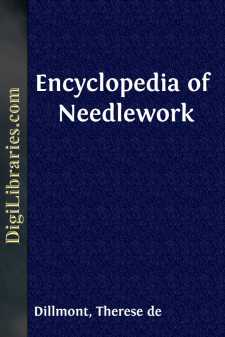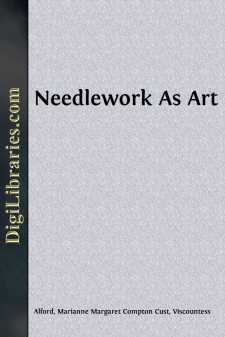Non-Classifiable
- Non-Classifiable 1768
Non-Classifiable Books
Sort by:
ORGANIZATION AND WORK History The Manhattan Trade School for Girls began its work in November, 1902. The building selected for the school was a large private house at 233 West 14th Street, which was equipped like a factory and could comfortably accommodate 100 pupils. Training was offered in a variety of satisfactory trades which required the expert use of the needle, the paste brush, and the foot and...
more...
INTRODUCTION England was apparently more liberal than Spain or France when, in the treaty of 1783, she agreed to the Mississippi River as the western boundary of the United States. Spain was for limiting the territory of the new republic on the west to the crest of the Alleghany Mountains, so as to secure to her the opportunity of conquering from England the territory between the mountains and the...
more...
THE NEURASTHENIC DURING HIS INFANCY. The neurasthenic is born and not made to order, but it is only by assiduous cultivation that he can hope to become a finished product. To elucidate the fact presented by the latter half of the preceding sentence is the purpose of this little book. In telling a story it is always best to begin at the beginning. I shall start by saying that I was born poor and without...
more...
FOREWORD From the earliest days of recorded history, the facts associated with military operations of the past have been constantly studied. The result has been the accumulation of a mass of information from which conclusions have been drawn as to the causes of success and failure. Although scattered through countless volumes, and nowhere completely systematized and classified, this accepted body of...
more...
Plain Sewing. Many, on opening the Encyclopedia of needlework will be disposed to exclaim as they read the heading of this first section: What is the use of describing all the old well-known stitches, when machines have so nearly superseded the slower process of hand-sewing? To this our reply is that, of all kinds of needlework, Plain Sewing needs to be most thoroughly learned, as being the foundation...
more...
PREFACE. In the Preface to the “Handbook of Art Needlework,” which I edited for the Royal School at South Kensington in 1880, I undertook to write a second part, to be devoted to design, colour, and the common-sense modes of treating decorative art, as applied especially to embroidered hangings, furniture, dress, and the smaller objects of luxury. Circumstances have, since then, obliged me to...
more...
TATTING INSTRUCTIONS The needlework called Tatting in England, Frivolité in French, and Frivolitäten in German, is a work which seems, from all accounts, to have been in favour several generations ago. Modern ingenuity has discovered some ways of improving on the original plan of tatting, which was, indeed, rather a primitive sort of business as first practised. To Mrs. Mee, one of our most...
more...
ACKNOWLEDGMENTS This book is made possible only through the interest and contributions of the many friends of Frank H. Nelson. Space does not permit my mentioning by name all who have furnished me with material, but I do wish to record my gratitude to them. In addition to the years 1925-1928 as Mr. Nelson's assistant I spent two weeks in the autumn of 1943 interviewing a cross-section of...
more...
INTRODUCTION. 1. The ceremony of dsilyÃdje qaçàl, or mountain chant—literally, chant towards (a place) within the mountains—is one of a large number practiced by the shamans, or medicine men, of the Navajo tribe. I have selected it as the first of those to be described, because I have witnessed it the most frequently, because it is the most interesting to the Caucasian spectator, and...
more...
NAVAJO WEAVERS. By Dr. Washington Matthews. § I. The art of weaving, as it exists among the Navajo Indians of New Mexico and Arizona, possesses points of great interest to the student of ethnography. It is of aboriginal origin; and while European art has undoubtedly modified it, the extent and nature of the foreign influence is easily traced. It is by no means certain, still there are many reasons for...
more...











